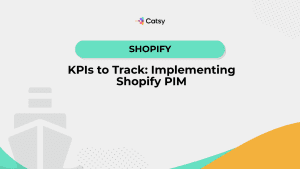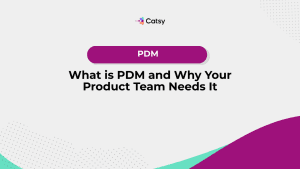Top 10 Reasons Why Enhanced Content Pages Convert

In this Article
Businesses, brands, organizations all want to connect with customers. In the context of business, the customer is the one who buys a seller’s service or product. It’s a two-way relationship. Any good customer relationship requires communication. The brand needs to communicate its message and that is exactly where enhanced content pages come into play.
Enhanced content pages go by many names, depending on the marketplace. Amazon offers Enhanced Brand Content (EBC), Walmart has options for Rich Media API, and other sites provide add-ons like Newegg’s A+ Content service. Regardless of location, enhanced product pages are ways to turns visitors into sales with enthralling content.
“The more you engage with customers the clearer things become and the easier it is to determine what you should be doing.”
John Russell, President of Harley Davidson
No matter where you’re selling your products, enhanced content can optimize for conversions – and here are the top ten reasons why.
Table of Contents

1. Upgrade Conversions with Your Brand’s Story
“Marketing is no longer about the stuff that you make, but about the stories you tell.”
Seth Godin, Author & Entrepeneur (source)
People love stories, enriching their lives with imagination. An enhanced content page allows you the space to connect with your core audience. This connection lies at the root of your customer relationship. With an enhanced content page, it can be fully brought to the fore. To do so, you must devise a message that encapsulates what your brand stands for.
Imbedding a story into your brand message is key for:
- Relating to customers
- Establishing customer relationships
- Creating a brand image
If you are looking for a way to reach the right customers, audience, or people, you need to relate to them. This way, you get the right people, and they get the right brand for them. You can achieve this by telling a story.
What is a Brand Story?
Although a brand story sounds like the history of a brand, it’s so much more than that. Brand storytelling is the act of portraying your brand’s values through a narrative. By implementing it successfully, a brand’s story can reach out to customers who relate to it.
Elements of a Brand Story
- History or origin story
- Brand values
- Goals or mission of the brand
- An appeal to people’s emotions
These days, hundreds of brands are attempting to reach people everywhere. With the multiple means possible, marketing trysts are unavoidable. The best way to stand out is to present some value within the endless streams of emails, ads, and sales-y posts. People want to see a more humanized version of big, abstract corporations. By opening up to them, allowing them into the brand’s world, a connection comes to life.
A brand story is a vital content marketing device. Content marketing is involved in the quality and value of a strategy. So it’s less about numbers and analytics, and more about conveying useful, informative ideas. The content has to be relevant to potential customers or audiences. The goal is to drive revenue by compelling people with intriguing themes, concepts, and messages.
Why is Brand Storytelling Important?
Notably, what people remember most about an ad campaign is the story. By and large, people don’t remember the attributes. They don’t remember the logic behind a product’s usefulness.
Today, anyone could start a business. It’s easy to create and market a new service online. Accordingly, many brands have to fight to remain visible among the over-saturation.
One way to do this is by connecting emotionally. Just by using an emotive marketing strategy, brands have succeeded in increasing their customer base by 15%, while achieving 50% more sales. Top brands today are recognized for their inspirational stories.
For instance, Airbnb has a powerful message: “Belong Anywhere.” With this theme, Airbnb’s entire campaign tries to alleviate the customer’s anxieties about travel and places to stay. With their Youtube channel, Airbnb showcases hosts as everyday people. As a result, customers Airbnb’s videos watching get a sense of assurance and reliance.
Emotion is what drives the subconscious. Not logic. It doesn’t matter how many case studies and research you show to promote your products. Cold hard facts don’t work anymore. Research even shows that most consumer decisions are emotion-based. In fact, about 95% of people’s buys are due to subconscious processing. Therefore, it’s better to focus less on making an argument for what you’re selling. Turn the attention on inspiring empathy and relatability.
Brand Storytelling is important for:
- Relatability & connection
- Conveying brand mission
- Standing out in the crowd of competitors
- Customer loyalty
How to Create Your Brand’s Story
Where do you start building your brand story? How do you find out what message your brand actually embodies? Think of it as constructing a fictional story. First, begin outlining the narrative.
What is the narrative?
The narrative is the foundation of your brand story. For any marketing strategy, a narrative is the story of your brand that engages customers emotionally.
To assemble a narrative, you probably already have everything you need. Think larger than business strategies, investments, and returns. What was your thinking process when you began your brand? Consider the feelings you can extract from its origin. Ponder what struggles your brand faced and how you overcame them. Explicate the brand’s goals and overall vision in a way to which customers can also relate. What do you hope to achieve by providing your product or service?
All of these thought-provoking questions are key. By helping you formulate the narrative, you can then portray the narrative visually – with enhanced content pages.
Building your Brand Story with Enhanced Content Pages
When someone goes out to shop, their experience is the store itself: The merchandising display, the organization of the products. The feeling of picking up a product and examining every angle.
With online stores, the experience is very different. Remember that you are selling the experience, not the product.
For every product, there is a story. First, a problem leads the customer to the product. With your enhanced content, empathize about this problem. Why do people need this product? Then, map out a story where the product is the solution. Tell customers how it can change their life for the better. Show passion in wanting to help them thrive.
Hence, enhanced content pages are necessary. It’s not just for attention-grabbing and engaging purposes. Enhancing your product pages is your chance to tell your story.
Visual Representation
Most people are visual learners – at least 65% of the population. Similarly, people are visual buyers. for instance, infographics are popular learning tools. On the same note, an enhanced content page is an elevated version of a classic product page.
People gravitate to what is easy and pleasing to regard. Consequently, enhanced content pages need aesthetic value.
Colors, Fonts, & Imagery
To set the groundwork of your brand story, use colors that portray a certain atmosphere. For example, the enhanced content page for a fireplace may have a palette of warm tones. Using rich, comforting colors like browns, tans, beiges, and navy blue can give a homey ambiance.
Equally important are the fonts. The font style and format should also match the brand story. Customers might be turned off by mismatched fonts. Furthermore, using a silly font for a serious product, like a health supplement, is off-putting. Stay consistent with all fonts, formatting decisions, and images.
Reinforcing the Brand Story
Today, online commerce has opened the landscape for sellers. Many sales channels are available to display products. You can reach customers on completely different marketplace platforms.
On the other hand, keeping the brand’s story intact can be a challenge. How do you maintain your brand story? Can you relate to various customer personas while remaining loyal to your brand? Well, it’s not as complicated as you might think.
Simply maintain the same brand elements throughout each product page or marketplace. Creativity need not be restricted, but stay authentic. PIM software can help polish product data accuracy overall, which helps establish brand credibility. Always revert to your main themes, brand message, and tone everywhere. That means your e-commerce sites, product pages, social media, and wherever else your brand exists.
2. Increase Conversions with Images & Videos
As humans, we live visually. Technology has allowed us to advance our visual world – and understandably so. Our brains are wired to remember colors, images, and videos. In fact, we can process visuals about 60,000 times faster than text. It makes sense then why young children prefer picture books.
The same goes for product images. Today, there’s the option of displaying all perspectives of a product, with zoom capability. But we love convenience just as much as we love images.
Visuals augment enhanced content pages.
Enter the enhanced content page. Now you can show several images and full-width images in all their glory. You can also include videos, which are more powerful than you’d assume. Adding videos gives your content up to 50 times more likely to rank higher on Google search results. Imagine what video could do to drive conversions.
Types of Visuals
- Lifestyle shots
- Videos
- Unboxing images
- Installation images
- Dimensions
- Close-ups
Example:
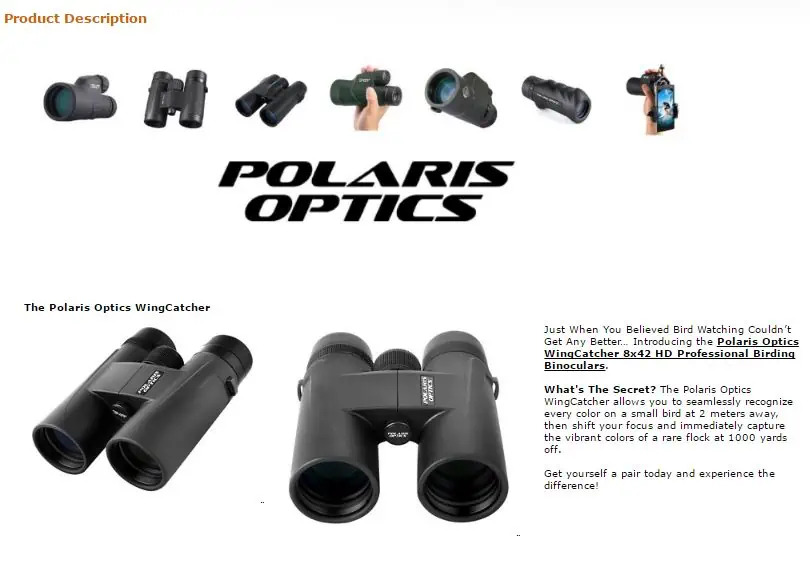 Source: tinuiti.com
Source: tinuiti.com
Notice how the types of visuals aren’t limited to just showing product details? Going hand-in-hand with brand storytelling, enhanced content pages portray an experience. What happens when you open the product? What can you do with it? How can you integrate it into your life?
Enhanced content pages allow you to connect with customers. By showing the value of the product in daily life, customers can relate on a personal level.
Why are visuals important?
People don’t have time to read every single detail. Nor do they have time to wait for pictures to load. This is the problem with a lot of product pages. While product listings can provide various images, there’s that minimal delay in clicking each thumbnail before the image loads. A prospective customer might not feel like click on thumbnails to see the other images. Sometimes the space allocated for the product listing isn’t enough to show the full image.
The trick is to give the customers what they want before they click off.
Example:
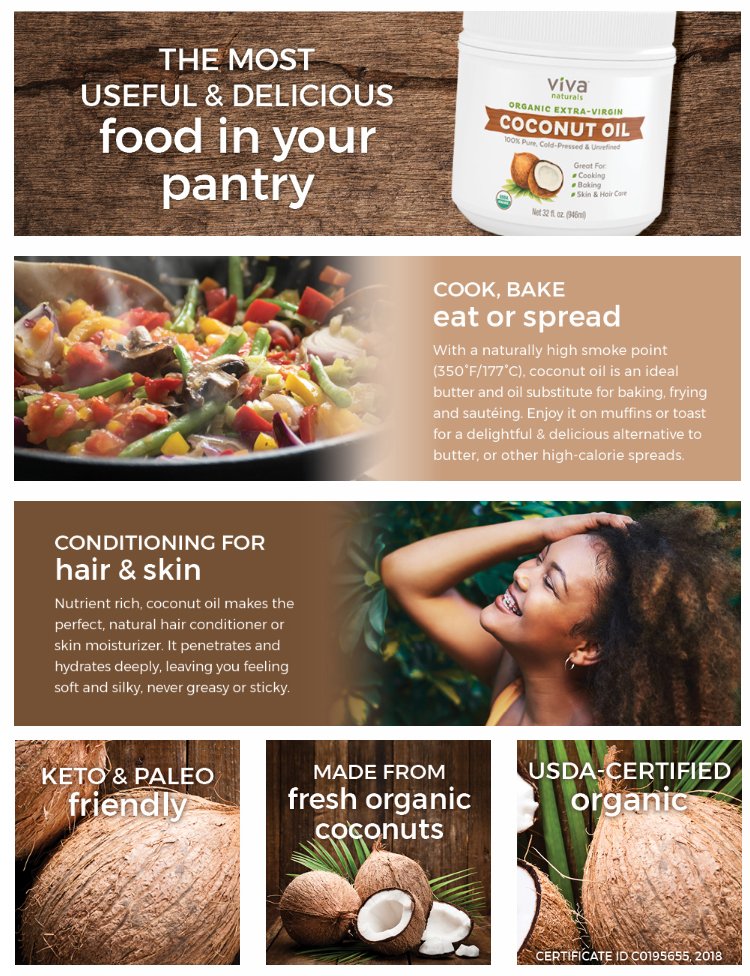 Source: verticalrail.com
Source: verticalrail.com
Did you know that most people spend less than 15 seconds on a page?
Let’s say a product gets a lot of views or clicks. If the conversions don’t add up, there’s a problem with the content. People won’t stay long enough to read about the product.
A vivid, visually-pleasing enhanced content page grabs customers right before they lose attention. When shopping online, customers get bored or restless. They might move on to the next product. Just as they scroll down, however, they fall upon the enhanced content of the product. With a perfect balance of detailed images and engaging text, you win attention back.
By viewing the product’s detail and texture, or seeing it on video, customers know what to expect. Accurate product content helps reduce bounce-offs immensely.
Benefits of Images in Enhanced Content Pages
Integrating images with text isn’t only a creative move for your brand. It’s a substantial driving force for success. In fact, incorporating images with text, as opposed to text alone, leads to 94% more views. Most importantly, customizing enhanced content with images results in 7x the conversion rate. Views are great, but increasing the number of people actually buying your product is the goal.
Benefits of Videos in Enhanced Content Pages
Adding videos ups the ante even more, becoming increasingly more popular in the marketing world. By 2021, video is expected to make search engines by storm due to its high SEO advantage. As for conversions, 90% of customers find that videos better help in their buying decisions, with landing page videos surging conversions by 80%.
Using video is a smart, engaging move for informing viewers about a brand or product. Its flexibility allows for a more fluid portrayal of the brand message. Because customers are more likely to remember videos, you can be sure that the brand story inspires viewers. As a result of videos’ influence on search engines and people, your products can receive more traffic and convert more viewers.
3. Improve Trust & Loyalty with Descriptive Textual Content
“Once you’ve established a loyal base of users, your business will soar.”
Richard Branson, foudner of Virgin Group (source)
After you collect the visuals needed to relay the brand story, what’s next?
As mentioned previously, an enhanced content page speaks to the customer. It provides an artistic experience with photos and videos. More importantly, it informs with highly enriched detail. As a result, it dispels any possible questions or concerns.
Enhanced content is not enhanced because it’s augmented with images. The description is also presented creatively, informatively. More than just a product description copy, the text is the driving factor in boosting customer trust and loyalty.
Let’s see how to compose the essence of an enhanced content page.
Creating Enhanced Content
Adding content is the key ingredient in promoting customer loyalty. Images are compelling, but on their own, there is no context, story, or meaning for customers to walk away with. Like an infographic without any information – it’s useless.
Components of Enhanced Content:
- Titles
- Descriptions
- Marketing Copy
- Bullet Points
- Benefits
- Product Variants
Product Titles
Along with the product name, using titles and subtitles is eye-catching. In the split-second of observing enhanced content, customers can extract the main ideas. Use a catchy title that epitomizes your product. Additionally, the title of the major product feature. That way, the customer doesn’t have to search too deep to learn more.
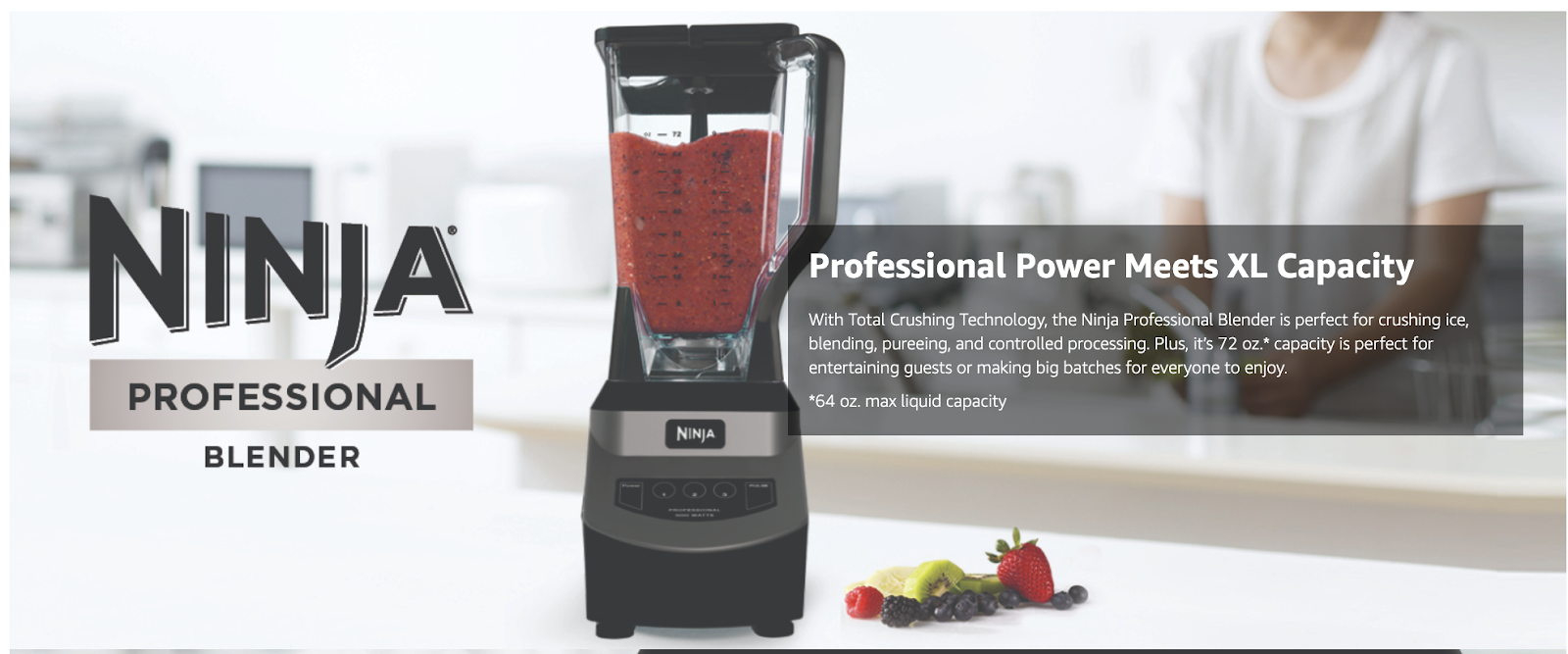 Source: sellzone.com
Source: sellzone.com
Description
Details are incredibly important when describing your product. However, condensing all the details in one block of text is too much. Not only is it displeasing to the eye, but there’s a high risk of bounce-offs. Instead, focus on each titled feature. The large header text will catch people’s attention, with an enlightened, but concise description of the feature below it.
Marketing Copy
The copy is the meat of the enhanced content page. As such, it provides the opportunity to elevate your brand story. In the copy, involve the brand’s values and the product’s greater significance. The copy is the prologue to the rest of the enhanced content.
Bullet Points
Adding a list to enhanced content is essential. With lists, customers who skim can easily absorb the bare-bones information. Additionally, lists open up the door to creative strategy. In the example above, the product’s main benefits and uses are listed in a unique format. They are a part of the artistic design.
Bullet points are also great for optimization. After all, they are one of the main features that search engines index, among titles, backend keywords (keywords available only to web crawlers), and product descriptions.
Product Benefits
Simply listing product details might go over the viewer’s head. Communicating the features of a product is nothing without stating the benefits. You need to display the main selling points clearly. Customers will get the most valuable information when you pair features with implementation.
What can the customer gain from each feature? Using this model is key to improving conversions. Once people know why a product is useful to them, they will be more likely to trust in what you’re selling.
In the example below, each benefit argues for its importance. People don’t care if a lamp has a “flicker-free natural spectrum light.” Rather, they become intrigued when they see that it improves vision and reduces eye strain.
Product Options
By showing the various options a product comes in, customers can better make a buying decision. Enhanced content gives the chance to better visualize the variants. For example, show pictures of other colors, patterns, shapes, or sizes.
Product Usage
Customers want to know how the product will integrate into their life. To do so, show the various ways to use the product. For instance, for an adjustable ladder shelf, explain all the possible ways to construct it. Or for ghee butter, show the different recipes to cook with it. By giving examples or instructions, it’s like reaching a hand out to customers.
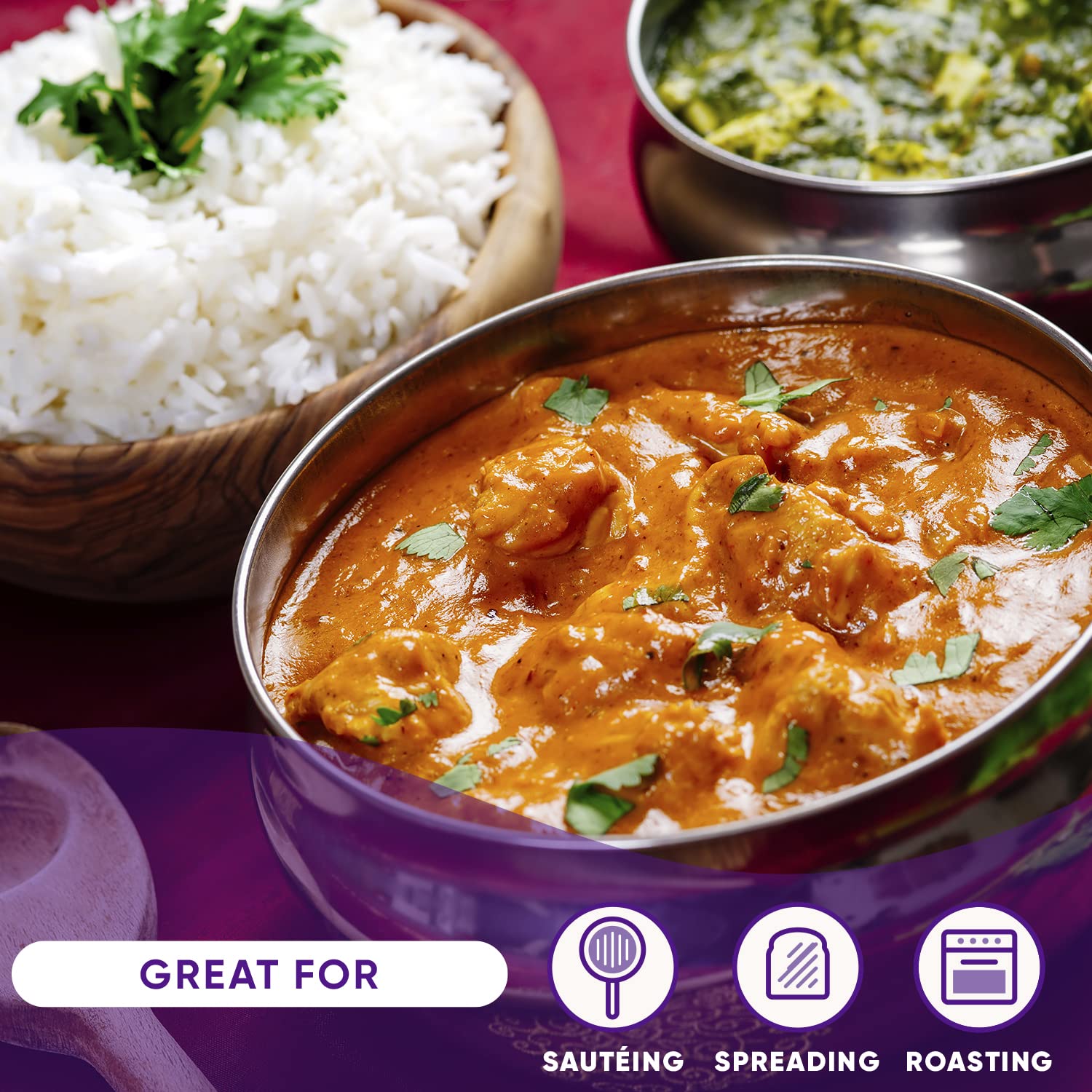 Source: Amazon.com
Source: Amazon.com
Accurate Presentation of the Product
Above all else, ensuring the accuracy of the product’s description is critical. Certainly, this seems obvious. But you’d be surprised how often returns occur due to inaccuracy. Actually, it’s the main reason for product returns.
If customers get a different product than what they interpreted – they will return it. People will trust your brand if you give robust information, clear images, and various perspectives, and be honest about the product’s benefits.
Make sure these things are accurate:
- Correct, detailed dimensions/specs
- Accurate images showing the size
- Consistent brand story or image
- The organized layout of enhanced content page
Content Improves Customer Loyalty
With accurate content showcasing everything customers need to know, there will be less chance of returns. People appreciate honesty. So when they receive exactly what they expect, they will feel more favorably towards your brand. This is key to gaining customer trust.
The organized design and format of enhanced content is another driving factor. For example, it’s important to lead the eye spatially. When customers see something pleasing and organized, they are compelled to stay on the page. Scrolling becomes irresistible.
Keep people intrigued. If they enjoy your brand, chances are they’ll come back for more. In other words, this is powerful for reducing bounce-offs and amplifying return-on-investment.
4. Clearly Present Product Variants & Comparisons
Many products are usually sold in variations. Despite being in a similar product group, variations have subtle differences. These differences are important to highlight for a customer before they buy in order to reduce returns and increase customer satisfaction and brand loyalty.
A powerful way to do this is to contrast products from each other. Enhanced content helps to guide a user in selecting the right product.
What are Product Variants?
Product variants are not to be confused with options. Product options are the different characteristics a product can come in. It’s all on one product page, and you need only select an option from the drop list to choose from. The price is usually the same.
Meanwhile, product variants are different versions of a similar product. For example, a smart TV brand might have various editions or types of TV. Each variant of the TV has differing features. Usually, most e-commerce sites already display similar products populated across the page. Unfortunately, they might be competing TV brands.
How can the TV brand make sure people have a chance to examine all their products before moving on to another brand?
By comparing and contrasting them on an enhanced content page.
The Case for Comparing Variants
Firstly, you aren’t competing with yourself. You are competing with other brands that sell the same product. By incorporating variants of your product, you allow people to see that you have the options they need.
Second of all, customers already compare products. Comparison shopping is incredibly rampant. This is especially true with online shopping becoming the main mode today. More people now than ever are researching before deciding on a product. So there’s nothing you can really do about it.
What you can do is help customers compare your products. Today, there are just so many options. About 54% of online shoppers simply leave a site due to the overwhelming amount of choices. An incredible 42% of shoppers end up not making a buying decision at all. Making a decision is literally tiring. Often times, the more options a person examines, the harder it is to choose.
By presenting your product variants first, you give customers easy access to comparisons. You provide all the information they need before they go elsewhere.
Furthermore, you limit their choice to just your products. Specifically, only the product variants of the exact product they are looking for. In other words, you’re displaying variants that are still relevant to the customer’s needs.
The Beauty of Comparison Charts
The comparison chart is one of the most popular enhanced content elements on any e-commerce site. There are a few reasons why. Most notably, including a comparison chart is essentially promoting your other products. For optimization, this is fantastic. A comparison chart is a great opportunity to include internal links and relevant keywords. Consequently, the product listing algorithm is more likely to favor your products.
Another reason for comparison charts’ popularity is that it’s an easy opportunity to cross-sell. In other words, it’s a way to advertise the other relevant products you’re selling. By showing the variety in your items, customers get a sense of reliability. It portrays your expertise in the product area. Simultaneously, you’re showing you care about customers making the right decision.
By showing the variety in your items, customers get a sense of reliability. It portrays your expertise in the product area. Simultaneously, you’re showing you care about customers making the right decision.
Enhanced Content Pages’ Comparison Chart Aspects
A comparison chart compares and contrasts the basic features of the products. Features may differ depending on the type of product. For instance, a comparison chart of a food product may compare nutrition facts. A chart of phone variants could compare specs like screen width, camera quality, and processor type. In the context of Amazon EBC, these features are called metrics, with up to 10 possible metrics to compare. Any more than 10 and it may be too much for customers to intake.
Done beautifully, a comparison chart can result in this:

Here’s an example of a comparison chart on Walmart’s online store:
Advantages of a Comparison Chart
- Limits choices to your product variants
- Clearly displays specifications
- Readability keeps customers engaged
- Reduces decision paralysis
- Reduces shopping cart abandonment
- Increases conversions

5. Improve Buyer Confidence in the Product
“The single biggest sales challenge today is, in fact, customers’ confidence (…) It’s not customers’ confidence in suppliers, but customers’ confidence in themselves and their ability to make good buying decisions that is in critically short supply.”
Brent Adamson, vice president at Gartner (source)
Customer trust and loyalty aren’t the only things to focus on. You also need to assess the customer’s confidence. How confident are they in the product? Furthermore, are they confident that they are making the right buying decision?
Enhanced content pages, if done well, positively impact buyer confidence. Before we get to why that is, let’s understand how confidence fits into the buying process.
Buyer Confidence
Before buying, a shopper must be confident about two things. First, they should have confidence in themselves to make a good purchase. Secondly, they should be confident in the product. Interestingly enough, the seller has the power to guide both of these factors.
In short, if you want to improve buyer confidence, it’ important to first understand the process. How does someone begin and travel through the buying process?
The Buying Process
- There’s a problem that necessitates a certain product
- The search for product information
- The evaluation of product choices
- Making a choice to buy a product
- Continuous assessment after buying
To summarize, someone might begin with having an issue that needs solving. Perhaps a certain product is a possible solution, so they go about researching. They might come across many solutions or various products. So they search and evaluate, compare and contrast until they find the right one. Because of all their research, they have to feel reassured that this product is what they should buy. After they make a purchase, they evaluate how well the product performs, and if necessary, they may return it or exchange it.
Why do you, as a seller, need to know all of this?
By being aware of a buyer’s process, you can better understand your customers. Then, you can use these seeds of insight to provide a riveting experience through enhanced content.
Enhanced content pages improve buyer confidence.
With enhanced content pages, you can tailor your product page to your customers. Enhanced content is a chance to be informative, useful, and inviting. It gives people everything they need to make a decision. Know the motivation behind a prospective customer’s product search. Then, you can empathize and connect. When customers appreciate the product page’s experience, they will be more confident in their purchase.
Let’s walk through the aspects of an enhanced content page that create a compelling experience.
A Compelling Experience Includes:
- First impression
- Brand story
- Rich images
- Reliable information
- Strong template design
The First Impression
A customer’s buying confidence begins with the first impression. Like most things, the first impression is what makes or breaks a person’s engagement time. Especially, this is vital when it comes to the web. Anything from a boring layout to slow loading can affect one’s attention span.
That’s why enhanced content pages are so important. When it comes to increasing buyer confidence, the experience must be compelling. This isn’t just about images and design. The text needs to leave a good impression as well.
Within the first 7 seconds of someone gazing over your product page, they should know three things.
- The product’s name
- What the product does, what its purpose is
- What benefits customers can withdraw from the product
Brand Story
We’ve already gone over brand storytelling in depth. To reiterate, using enhanced content to tell a story helps to relate to customers. On the same note, your unique brand story helps differentiate your product from that of competitors.
Brand distinction is fundamental. Customers can see that you’ve set yourself apart from others. It establishes a sense of brand authority. As a result, they feel a sense of trust, and subsequently, confidence in your product.
Rich Images
A diverse layout of images is a key part of enhanced content. The images draw the eyes in. To do that, images can’t simply be the product from different perspectives. Although that is an option, it should be in combination with images that help portray the brand story.
The function of images is to provide various perspectives – not only dimension-wise but also lifestyle-wise. Especially when it comes to a product that plain and looks the same in every photo. Take a white keyboard skin or a glass cup. How many different images of either image can you showcase before customers get bored?
The images should add something new. A creative move would be to have pictures of the products in action. In other words, show how they look when incorporated into daily life. When people see the product’s relevance in their lives through images, they feel more confident that it’ll fit their needs.
Here’s an example of a product page that lacks vivid image variety:
Here’s an example of a product with a ton of colorful images, with a simple, clear glass cup:
Robust Information
A customer with knowledge is simply more confident. We know people do research before buying any product. Therefore, your enhanced content page must be informative. By being detailed, customers view you as an authoritative source. Especially if they’ve already researched elsewhere. Trust will increase if you hit on every feature with which they are familiar.
Tweak templates to boost buyer confidence
Each online marketplace offers a set of customizable templates. So there’s no need to worry if you lack technical skills. Each e-commerce marketplace differs a little, but they generally offer similar aspects.
Anatomy of an Enhanced Content Page Template:
- Brand logo at the top
- Product description sections
- Section layout
- Hi-res Image positioning
- Banners
- Mobile-friendly interface
For instance, Amazon’s EBC feature provides a variety of templates. Each template has several characteristics that set them apart. Obviously, the template matters less than the actual implementation. However, the way you design your enhanced content page is incredibly significant to buyer confidence.
Each template module provided allows for much customizability. Accordingly, you can modify the template to fit your brand. Templates offer a lot of opportunities in their design so that you can fit the image and persona of your target customers. By matching the customers at their level, the enhanced content is more pleasing and relatable.
People feel more comfortable with the things they know. That’s why it’s essential to cater to them by presenting the product in a similar style, design-wise. Even more, your enhanced content page will demonstrate the product’s confidence in itself to be of use to people.
Here’s a great example of an enhanced content page that displays confidence through its template design:
A well-curated template will make a viewer think, “Wow, they really know what they’re talking about.” The goal is to boost confidence through every facet – information, design quality, and overall impression – so that there more self-assured conversions.

6. Ramp Up Traffic to Enhanced Content Pages with SEO
“Discoverability equals sales in the digital world.”
Dev Chandan, Founder of Dev Chandan (source)
Certainly, in-store shopping is still present. In the last decade alone, however, revenue in online stores has skyrocketed. E-commerce sales increased by 15% in 2018 and continue to dominate over brick-and-mortar stores.
Top e-commerce marketplaces like Amazon, Walmart, eBay, and others are now where most people start their shopping. In fact, Amazon was home to about 49% of all e-commerce purchases. It’s become the primary hub for online shopping and even searching for products. While Walmart had less than 4% of sales share, its e-commerce sales jumped 43%.
With so many brands pushing their products onto online marketplaces, how do consumers find them? How does e-commerce search engines manage thousands of products?
E-commerce Search Engine
You’ve heard of search engine optimization. What about e-commerce product search optimization?
Let’s take Amazon, for example. The search landscape of this huge marketplace is quite competitive. Up to 70% of people don’t even go past the first page of search results, with the first item stealing the attention of 35% of shoppers. Understandably, this makes selling on Amazon sound bleak.
Let’s start by understanding how e-commerce search engines work. The thing is – no one really knows how each e-commerce algorithm functions. Each marketplace, be it Amazon, Walmart, or eBay, has its own set of rules. Luckily, most marketplaces offer tips for optimization before introducing your product in the market. However, most e-commence search engines have a few things in common.
When evaluating product ranking, e-commerce search algorithms generally examine similar factors:
- Keyword relevancy
- Product description
- Price of the product
- Product availability
- Sales velocity (how quickly the product sells)
Optimization on E-Commerce Marketplaces
To maximize potential, you must optimize your product listing both for general search engines and the marketplace.
For search engines, the goal of optimization (SEO) is to increase traffic to a website. The main factor involved is how relevant keywords are to the search queries. Some websites might want more traffic for the primary goal of selling their services or increasing passive income. People generally search on Google or Bing to seek information. This means there’s no intent to buy anything just yet.
On an e-commerce site, people who search tend to be ready to make a buying decision. In terms of their buyer journey, they’re in the middle to later stages. So the goal of optimizing your products online is to expand brand visibility for conversions. You want to get more clicks to eventually drive sales. That makes the SEO process a bit different from that of search engines. In this case, not only should search results be relevant, but they take into account performance (like clicks, conversions, reviews, and so on).
Enhanced content pages improve optimization.
First of all, you should know that enhanced content does not optimize directly for rankings. E-commerce search engine indexing can’t detect enhanced content – at least not for keyword relevancy. But in terms of performance, enhanced content can definitely improve optimization. What it can do is optimize for conversions, which is crucial in how the search engine reviews product page quality. The strategy then is to work on the content that makes a high-performing product page.
Benefits of Enhanced Content SEO:
- More traffic & better click-through-rate
- Increased conversions
- More sales, fewer returns
- Higher ranking on search results
In other words, enhanced content pages affect other metrics, such as sales, conversions, and returns. Even if your product pages get few click-throughs, enhanced content can make-or-break their buying decision. A quality, enjoyable enhanced content experience can improve sales by 5%.
Although it may seem small, it actually makes a huge difference.
Why? Well, the more people your content converts, the higher the product’s ranks on search results.
Incorporating enhanced content jumpstarts your momentum. Enhanced content can improve conversions anywhere from 3% to 10%. To summarize, more conversions equals better ranking equals more traffic – the cycle continues.
On top of that, the enhanced content page is a great opportunity for better SEO. Even if the content itself isn’t directly indexed, there are other ways to populate keywords on enhanced content.
SEO on Enhanced Content Pages:
- Search Results Snippet
- SEO Keywords
- Image Optimization
Search Results Snippet
When done well, the first 100-150 words of your product description could show up under your listing. This is the snippet. Much like meta description on search engines, the product search results snippet needs to be rich in keywords – without keyword stuffing. An optimized snippet will be concise, while still maximizing ranking.
In the example below, the top products that appear on Google Shopping results match up with the most relevant product description snippets.
SEO Keywords
Keyword optimization starts from the product title. Across online marketplaces, the general practice to have a concise title that begins with the brand name, followed by the product, material, and other descriptive attributes. Throughout the rest of the product page, disperse keywords strategically in headers, bullet points, backend keywords, and product details (like color and material). Doing so will be enough to cover enhanced content’s lack of indexing.
Image Optimization
Images are critical for optimization. There are two ways that images improve rankings: directly and indirectly.
First of all, images directly contribute to optimization through keywords. By inputting keywords into the alt-text of images, the algorithm can better index them. For the reason that search engines can’t read images, the alt-text helps them identify them. There’s a greater likelihood they will appear higher on the search results. And not just on any e-commerce site, but on search engines as well. Therefore, make sure you use relevant keywords in your image’s alt-texts.
Secondly, how images indirectly contribute to SEO is simpler than you think. Already, we discussed at length the importance of images. However, just to drive the concept home, here’s how high-quality visuals improve product ranking.
The main product image is the first to catch a viewer’s eye. In fact, 67% of shoppers find the product image to be incredibly important in their buying decision. Even more so than detailed information, ratings, or reviews. An excellent image is more likely to draw in leads, or new viewers, increasing the click-through-rate (CTR). In turn, there are more people who may purchase the product, hence more sales.
Equally important are the other images on an enhanced product page. All images should be consistent in quality and vividness. A good main image could attract viewers, but it won’t make customers. Displaying other images or graphics while maintaining the brand story will propel engagement.
In the same vein, remember not to reuse product images from the main listing. Enhanced content should feature new, interesting pictures. Otherwise, viewers will feel bored at the redundancy.

7. Enhanced Content Pages Reduce Returns
“Your most unhappy customers are your greatest source of learning.”
Bill Gates
The goal of product pages is to educate the user completely on the product. What this entails is not only a product’s description, but an explanation for its uses, installation, and other specific details. However, many sellers fall short in fully informing about the product, especially on just a product page. As a consequence, returns skyrocket, which can do a lot of harm, in more than one way.
The Undesirable Effects of Returns:
- Returns are costly to the process
- Customers who return tend to leave bad reviews
- You’ll lose out on repeat buyers
Returns are Costly
On one hand, offering a smooth return process is attractive to people. About 88% of customers prioritize the free return shipping option as a major element of their buying decision. In fact, 54% of people are more likely to online shop if free returns are allowed. Making the return process more convenient may allow customers to view your brand positively.
On the other hand, returns can make things harder in the long run.
When you get returns, you’re not just getting the product back. You just lost the cost of the product and the shipping cost (especially when shipping is free). On top of all that, the product may not be in the same shape as before. To evaluate its state, you need to invest further in product inspection. Hence, it’s costly to money and time.
Returns Lead to Bad Reviews
If a customer is dissatisfied, there’s a chance they may vent in the review section. This is a problem, especially if product pages are missing crucial information. What this then leads to is systematic customer unhappiness.
A lot of people – 84% of online shoppers – read and trust product reviews before buying. Social learning doesn’t stop in the digital world. People are more likely to buy what the majority recommends. That’s why reducing returns is critical. Depending on the reason, they may be affecting your brand reputation, leading to low ratings.
Later, we’ll discuss in detail how enhanced content can improve reviews.
Say Goodbye To Repeat Buyers
As a result of negative product experience, you may lose out on repeat buyers.
Now, all this is not to say that offering a lenient return policy is bad. Rather, research finds that allowing returns increases sales overall, despite returns. When done correctly, you’re still getting a good return-on-investment.
So how can you reduce returns without tightening your return policy?
How Enhanced Content Pages Reduce Returns
Over 65% of all returns are due to retailers. The most common reason being the wrong product received, followed by inaccurate descriptions and damaged products. While you might feel defensive at this accusation, take a second to understand the implications.
What this means is that you have the power to reduce returns. If the issue lies in description inaccuracy, you can easily control that factor in your favor. Integrating enhanced content is one valuable way of doing so. An enhanced content page offers space to go in-depth about the product.
Enhanced Content provides:
- A better understanding of the product capabilities before purchase
- A comprehensive description of the specs
- Visual showcasing of product details
- Installation diagrams to prevent confusion
- Overall high-quality visuals of the product
Better Understanding of Product
Communicating all information about products allows customers to be more familiar with you. They’re more likely to make repeat buys or check out your other products if your brand story resonates with them.
At any rate, more information is always better. The customer can make a better buying decision. Once they receive the product, you will likely see fewer returns since they knew what to expect. If your product description lacks information or is confusing, customers will return the product, and leave a negative review.
Clear Description of Specs
The specs are hugely significant. Yet, it’s unlikely that anyone truly reads the section titled “Technical Details” towards the middle of the product page. Enhanced content pages allow for a creative way of incorporating specs.
Of course, this depends on the type of design you’re going for. With tech products, a comparison chart is a great way to display all specs without it being a jumble of technical language. Some sellers chose to describe specs as they relate to each feature. That way, confusing numbers or symbols can be explained. Others prefer to list their specs to this side, under a notes column.
However, listing numbers and dimensions is nothing without visual representation.
Visual Product Detail
Before buying a product, customers require an overall visualization of the product. In contrast to an in-store experience, people have no idea how a product feels or looks in real-life.
Images of the product on its own are certainly useful. However, it’s still difficult to envision the product’s dimensions. For example, how would a chair fit in a furnished living room? Does the product’s color in the picture match with its true color? Does the product look smaller or bigger online? By targeting these aspects, you can prevent customer dissatisfaction.
Detailed visuals show products in various perspectives:
- The way a product fits into a space
- How the product looks when opened or used
- Contrasted with other objects to show relative size
How-to Diagrams
Just like instructions are useful to add to the enhanced content page, how-to visuals are even better. Clear instructions combined with diagrams or images pack a punch. Sometimes even if a product comes with an instruction manual, it’s unlikely that they’ll read it in-depth. Enhanced content pages offer a fast, readable way for customers to clarify any confusion.
Frequently Asked Questions
Many product pages already include a Questions & Answer section at the bottom. Right before the reviews, people can ask and answer other users’ questions. However, incorporating a FAQ into your enhanced content is a game-changer.
One of the many aims of enhanced content pages is to be a source of knowledge. As such, it’s an opportunity to inform the customer about everything they need to know about the product. Meet customers half-way by answering any potential questions and concerns before they ask.
The beauty of FAQ is that you can address concerns. Namely, if you have received negative reviews in the past, use them for quality assurance. Particularly if the reviews were due to misinterpretation or confusion, as opposed to an actual defect in the product. Never ignore reviews.
For example, let’s take a supplement product. A reviewer complains about the supplement causing nausea upon taking it before breakfast. Obviously, this is pertinent information, but let’s say the product description doesn’t include anything about taking the supplement on an empty stomach. To handle this deftly, add an FAQ about this exact concern.
In short, the FAQ is critical to letting customers know about any possible effects of a product. Now informed, they can prevent potential negative experiences.
With enhanced content, your product pages will be well-equipped for converting visitors – and keeping them too. By establishing clarity in your every knowledge you bestow, customers know exactly what they’re getting. You’re also going above and beyond by making sure your customers have everything at their disposal to decide, purchase and use a product with satisfaction.
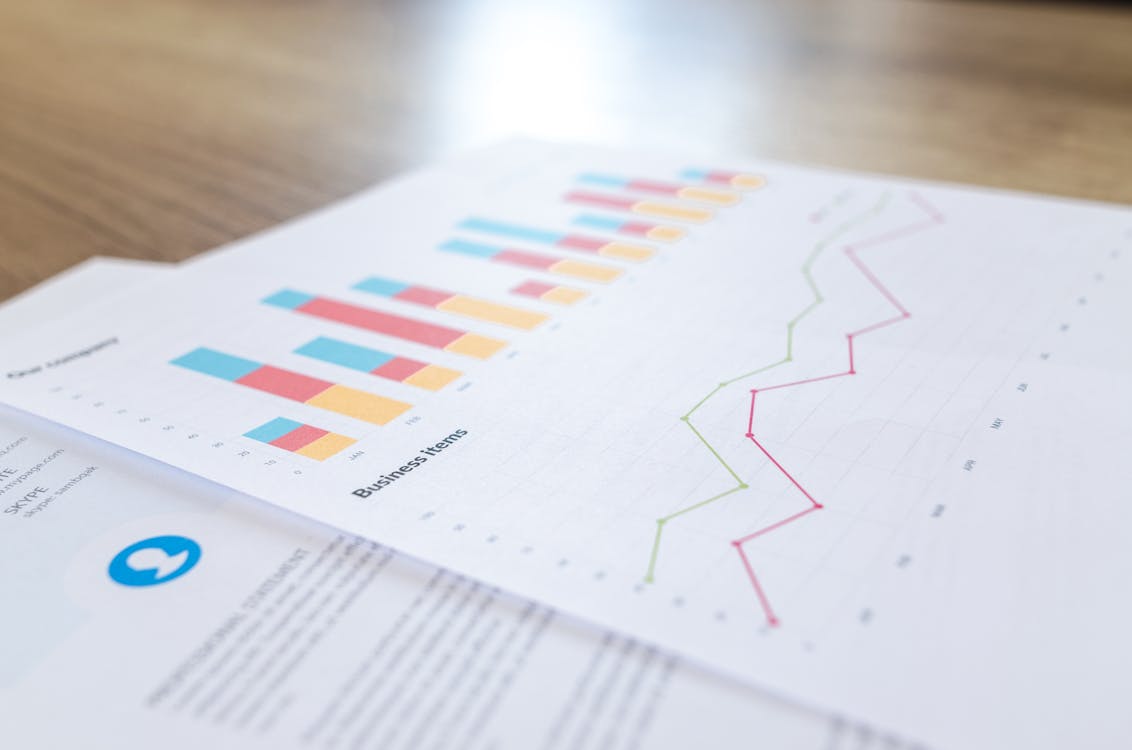
8. Maximize ROI from Amazon PPC Ads
Organic traffic is obviously ideal. But it’s tough with a marketplace like Amazon becoming a center for thousands of competitors worldwide. Sometimes a boost is essential to jumpstart sales. A popular method of gaining traction to your product is paid to advertise, also known as Amazon’s PPC.
What is PPC on Amazon?
Amazon’s Pay-per-Click advertising option is much like that of Google. Whenever someone searches for a certain product or keyword, sponsored product ads are the first to appear. Sometimes product display ads appear to the side of a related product page as well. These are all paid to display first before other products. Only when someone clicks on the ads does the seller pay.
Why might you need to implement a paid advertising campaign?
The main marketing struggle for 63% of companies is gaining traffic. Chances are, this is a common challenge for sellers starting out on any e-commerce marketplaces. When pushing a new product to market, a little fuel goes a long way. Thus, establishing PPC can be worthwhile for getting that leg up on visibility.
The Inner Workings of Amazon PPC
Again, much like Google, Amazon utilizes an auction-based approach to PPC advertising.
Needless to say, competition is rampant on Amazon. As such, you still have to compete with other sellers with similar products. Every seller must bid a maximum amount for their PPC campaign – this is the CPC, cost-per-click. The higher you bid on your ad campaign, the greater your likelihood of ranking higher than other brands.
Of course, this all depends on the keywords. What keywords you use for your product ad campaign determines how many competitors you may have. One great advantage of PPC is that you can test what keywords best maximize traffic to your product page.
Furthermore, Amazon matches up search queries with products most likely to entice the one doing the search. In other words, specific and person-specific factors are involved. What products someone may see depends on their history of searches, buys, and overall shopping behavior.
This makes Amazon’s algorithm a more complex field to traverse. However, when done right, PPC can be an exceptional investment.
PPC Leads to More Traffic
At least 2 billion people shop on Amazon every month, which makes sense. It is America’s most popular e-commerce site, followed closely by Walmart and eBay. What the means is that there’s a huge pool of potential consumers to reach.
With paid advertising on Amazon, you can guide a high amount of traffic towards your brand. On average, sales resulting from a PPC campaign can provide anywhere from 10% to 30% of overall revenue. Needless to say, if you’re selling on Amazon, its PPC feature can give you a rapid rise in traffic.
Main Benefits of PPC on Amazon:
- Increase brand visibility
- Jumpstart and boost sales
- Improve organic rankings
- Maintain a high rank among competitive brands
Most notably, you might not be hitting your full potential of ROI with paid advertising without a good-quality ad. The quality of an ad is based on how many clicks it receives. Many factors go into an ad’s quality. Most notably is the ad’s relevance, but also the quality of the product’s elements. To achieve relevance, an ad needs to have a well-optimized product title, a high-resolution picture, and specific keywords. For every click, you, as the seller, pay for the ad. At the same time, the ad’s quality score increases with every click, giving the ad a higher ranking.
Getting clicks is only one part of the process. In order to convert those clicks into sales, you also need a quality product page.
So what makes a quality product page?
Enhanced content guarantees more conversions.
Combined with enhanced content, you can maximize your PPC campaign’s ROI.
Even if you have a great ad that can really attract people’s attention, with product pages optimized to find the right consumer, there’s no promise that you’ll get more buys. Well, you’ll certainly receive more sales than without PPC. But if the actual product page content is not engaging enough, you could be losing out. The ROI may not match up to the cost of the ad.
That’s why enhanced content pages are central to overall PPC results. Are they necessary? No – but enhanced content will contribute to long-term, steady prosperity.
What an enhanced product page does is jump-start the momentum of your brand’s success.
Here’s why: The quality of an ad takes sales into account, in addition to click-through-rate. More clicks combined with the converting power of enhanced content leads to conversions. Those sales go back into the ad’s performance, improving both its paid and organic search ranking. Overall, this leads to more traffic and conversions for you.
9. Receive Better Reviews with Enhanced Content Pages
“It takes humility to seek feedback. it takes wisdom to understand it, analyze it, and appropriately act on it.”
Stephen Covey, author of the 7 Habits of Highly Effective People
One of the main goals of enhanced content is to address customer concerns – before they ask them. This means taking into account any possible side effects, negative outcomes. It may also mean describing how to use the product properly.
When it comes to enhanced content pages, a prominent theme you’ll find is the importance of knowledge. We cannot stress enough how vital it is to educate.
Reviews are Influential
First of all, reviews are a form of communication. Negative reviews are a signal that you should take into consideration. By utilizing the feedback from reviews, you can:
- Ensure product quality
- Improve any part of the transaction or shipping process
- Fix any packaging issues
- Revamp the product page
Reviews Contribute to SEO
Interestingly, reviews are a great gateway for keyword enrichment. Positive reviews, in particular, can augment your brand’s visibility. Combined with good ratings, Google may list you in its Product Search feature. On Yelp, for example, a single bad review means losing out on 30 prospective customers.
Reviews Impact Customer Trust
People place a lot of weight on the experiences of others before making a buying decision. A majority of people (85%) read about 10 reviews before purchasing. Furthermore, 72% of them trust brands more based on other customers’ favorable reviews. Reading reviews spurs action – in other words, conversions. That’s why every seller is required to take note of reviews and manage them before their reputation sinks.
Whether you receive one bad review or a hundred, it doesn’t say anything directly about your brand. Every product has at least one unhappy customer – that’s natural. However, realize that you can improve what kinds of reviews you receive regularly.
Enhanced content pages make it possible to ensure product quality, respond to customers, and offer effective information.
Enhanced content pages improve review quality.
The root of bad reviews is in a subpar product page. Of course, there are other factors involved. However, the basis of the issue is that a customer didn’t get what they thought they would receive. Consequently, they express their disappointment and displeasure through a review.
So what’s happening here?
There’s a clear disconnect between the product page and reality. That is to say, a customer derives their expectations from the product page. If a customer complains that a product doesn’t work – sure, that could be true. But does the product page accurately explain how it works, every single way it could work? Is there a section outlining why it may not work in a given situation? Does it include solutions for these concerns? If the truth is that the product may simply work for some and not others – let’s say it’s a supplement – is there a disclaimer anywhere?
All of these critical pieces of information are necessary to fully educate people. Understandably, sellers want to display their product in a golden light. But omitting certain details might cause more damage in the long run.
With a clever display of information, you can enlighten customers fully about the product. That way, they have everything they need to know before making a buying decision – without a negative review.
How to creatively inform with enhanced content:
- Address any and all possible concerns
- Clearly explain and portray accurate product dimensions
- Explicate the usage of a product in a readable manner
- If applicable, how to avoid any adverse effects
- Drive home product’s main selling points
Address All Possible Concerns
Enhanced content provides a space to read people’s minds. Answer all their questions before they ask them. Address any possible issues or concerns you can think of. The best way to improve reviews is by preventing any misinterpretation or misinformation. Naturally, this starts with making sure all product information is clear.
As mentioned before, the FAQ section is perfect for this. Think of it as a mini customer service section. Viewers can go check if the FAQ answers any questions they may have. This way, they can ensure the product is right for them. Take advantage of past negative reviews – address any issues or misunderstandings you’ve seen to avoid further customer displeasure.
With enhanced content, there’s a lot of flexibility in how you communicate with customers. Regardless, responding to customers increases loyalty and trust in your brand.
Provide Accurate Product Dimensions
A lot of issues that come up in reviews may also have to do with misconstruing product dimensions. Understandably, measurements and numbers seem abstract. Especially with online commerce, it’s difficult to conceptualize what a product actually looks like. Even more so when there are several product options for different sizes. How do you properly depict the real-life size comparison?
It’s not enough to textually state dimensions, no matter how clear or accurate. With enhanced content, you can show a side-by-side comparison of the different sized products. Provide an image of the product next to other objects or in a furnished setting for a visual portrayal of its dimensions.
Explain How To Use Product
To avoid customer’s bad experience from using a product wrong, make sure you explicate how to use it. Enhanced content pages provide an area to do so in a readable manner. With this, even is customers neglect to read the instruction manual or misunderstand a product’s use, your product page has already done its part. In other words, responsibility can’t be attributed to inaccurate or insufficient information. How-to guides also impact customer trust.
How to Avoid Adverse Effects
Along with use instructions, include precautionary tips. By doing so, you can prevent common mistakes that customers may be prone to making. This further establishes your role as a source of reliable knowledge. Customers will see you as helpful and caring for their satisfaction. Thus, you can avoid negative reviews about the product’s effects.
Drive Home Selling Points
To really ensure that customers know they can make informed decisions from your information, use enhanced content pages to highlight the product’s main selling points. This places the focus on the prominent points about the product.

10. Achieve a Higher Sales Rank
Sales rank is the sales performance of a product compared with other products. In other words, it’s like the golden trophy for how well a product is selling, allowing its feature in the “Best Selling” category on any e-commerce site. Achieving a high sales rank depends on all the other factors you’re working towards: high traffic, improved reviews and ratings, and of course, more conversions.
Factors involved in Sales Rank:
- Overall sales history
- Sales volume
- Conversion rate
- SEO (includes sales velocity, copy, image optimization, etc.)
By all means, achieving a high sales rank is challenging. It might take a long time to reach the top 50, especially when your products are competing with thousands of other similar products. Fortunately, the sales rank is always updating by the hour, so you may reach your goal eventually. Not to mention you don’t need to be number 1, number 50, or even number 100 in any ranked listing to prove successful. Simply improving sales rank goes a long way.
Traffic without conversions results in a lower sales rank.
But remember – improving your sales rank isn’t the main goal. Rather, it helps propel your conversion rate’s momentum. Even if your products receive a lot of traction, that traffic is useless if no one feels compelled to take action. In fact, an unequal ratio of traffic to conversions will calculate into a lower sales rank. This completely hinders you from progressing further. More importantly, it also indicates that something needs to change along the prospective buyer’s journey.
On the other hand, you might be earning only a few clicks initially. But high-quality content may empower enough viewers to act, resulting in a higher conversion rate. More conversions calculate into a better sales rank, which further increases conversions. It’s quite a satisfying cycle.
Notice something in common with all the factors that affect sales rank? By implementing an enhanced content page, you can simultaneously improve all of them. That’s the key to unlock a higher sales rank – and maximize conversions.
How Enhanced Content Improves Sales
The strategy to increase product sales lies in several factors. Attracting the right people, captivating them with the product page, and keeping them absorbed long enough to make an informed, buying decision. That’s a sale for you.
An enhanced content page wins at spurring sales for several reasons:
- Designed to grab attention
- Mobile-friendly
- Images improve indexing
- Reduce bounce-offs
Enhanced Content Grabs Attention
The design engages the customer to keep attention. Enhanced content offers a space to really flesh out the product’s value to one’s life. And it does this without sacrificing inconvenience. Meaning, the content is easily scannable, perfect for people to take it all in without wasting time reading large chunks of text. The opportunity to educate viewers combined with a fascinating brand story allows people to hold your brand with high trust. All of these elements will captivate viewers.
By simply attracting customers enough to stay on the page, it gives you more leverage. The more time customer spends on your page, the more likely they will make a buying decision. By keeping viewers longer on a product page, there’s a higher chance it will convert.
Enhanced Content Pages are Mobile-Friendly
Think about how many people shop on their phones. Notably, more than half of Americans who shop online do so on their phones. To put that into perspective, nearly 80% of the U.S. do their shopping online.
People who do the most online shopping are Millenials and Gen Z-ers. Let’s look at Gen Z alone. This generation spends an average of 3 hours on social media, with 73% admitting social media influences their buying decision. Social media is a growing platform for sales. Don’t let social media commerce get ahead. Lacking mobile-friendless puts you at risk of reduced sales since people can simply use easier shopping methods elsewhere.
With enhanced content’s mobile-friendliness, you have a higher chance of reaching this young population. Streamlined, fast-loading sites on mobile reduce the bounce rate of your product pages. Thus, this puts your store on par with the in-app commerce of social media sites.
How a product page shows up on mobile majorly affects sales. Without enhanced content, the only thing that appears is the product description text. How long do you think they’ll spend on the page? Not long. Most people tend to be on-the-go when shopping on mobile. Hence, providing only masses of text won’t entice them as much as a visually palatable enhanced content page.
Furthermore, mobile-friendly product pages magnify your SEO. Search results prioritize finely-tuned responsive webpages.
Enhanced Content Images are Indexed
Mobile-friendliness isn’t the only thing that search engine algorithms love. The images on your enhanced content help improve brand visibility. E-commerce search engines can locate and display your product listing with a boost from images. So even if some e-commerce sites might not index enhanced content, images still offer SEO support. Elements like image alt text are seen by web crawlers. By inputting keywords into the alt-text, you can improve your SEO. No need to worry about missing out on optimization with enhanced content. Content does a lot fo optimization in other ways, like reducing bounce-offs.
Final Words
If you have trouble keeping up your conversion rate or you’re not getting your expected return-on-investment, enhanced content could transform your product pages. By optimizing for conversions, enhanced content is the cherry-on-top of all other marketing efforts. Use enhanced content to embed your brand story, convert customers to loyal repeat buyers, and extract all potential benefits out of your product pages.
Need help with your enhanced content pages? Click here to see how Catsy can help you optimize your process.
Product information management (PIM) is a catalog software tool built to speed products to market.
Digital asset management (DAM) is a software used to organize and enrich digital assets.


